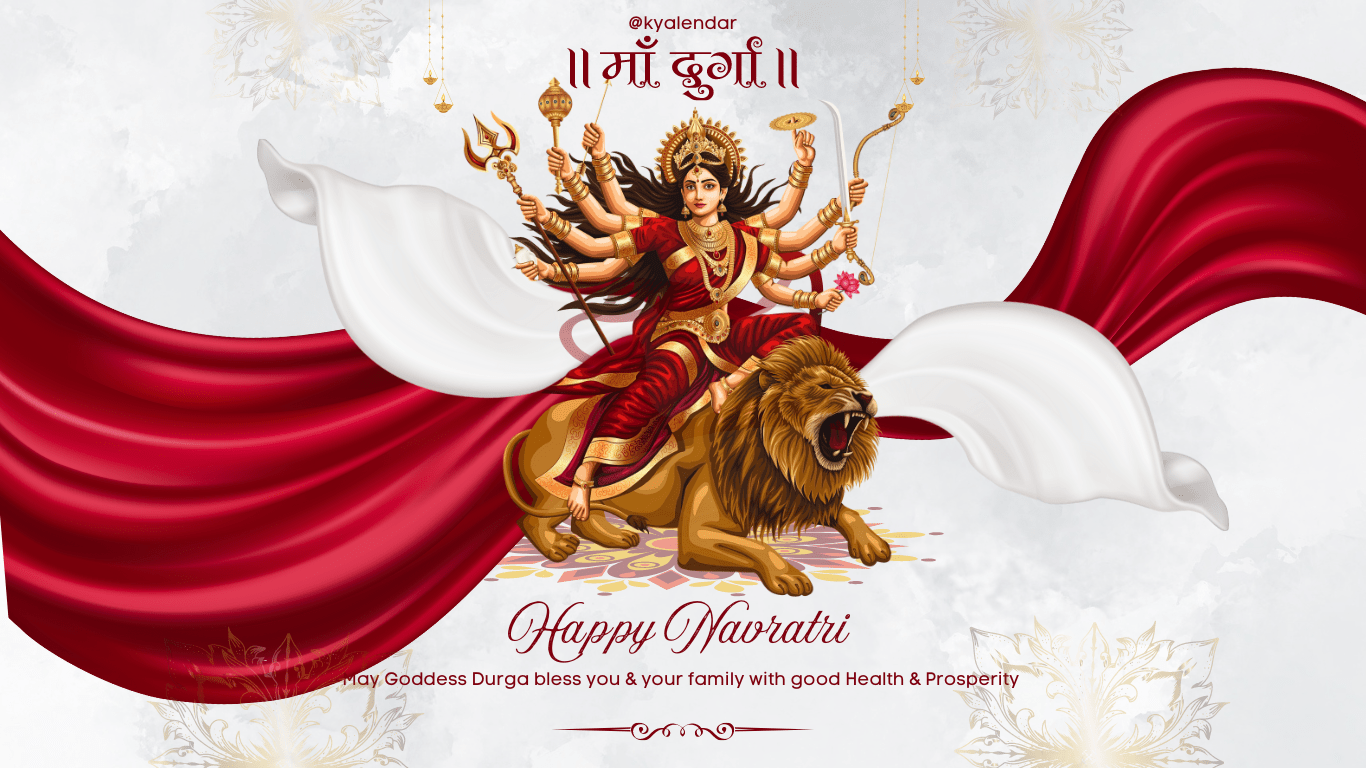
- This event has passed.
Navratri
October 3 - October 11

Navratri, a significant and vibrant festival in Hindu culture, marks the beginning of an auspicious period dedicated to the worship of the goddess Durga. Spanning nine nights, this festival celebrates the divine feminine energy and is a time for deep spiritual reflection, devotion, and festivity. Here’s an in-depth look at the beginning of Navratri and what it entails.
What is Navratri?
Navratri, which translates to “nine nights,” is a festival that spans nine nights and ten days. It is observed with great fervour across India and among Hindu communities worldwide. The festival is dedicated to Goddess Durga, who represents strength, virtue, and the power of feminine energy. Navratri is observed twice a year: in the spring (Chaitra Navratri) and in the autumn (Sharad Navratri), with Sharad Navratri being the more prominent and widely celebrated of the two.
The Beginning of Navratri
The beginning of Navratri is marked by a series of rituals and preparations that set the tone for the entire festival. It typically starts with Ghatastapana (the installation of a sacred pot), which signifies the official commencement of the festival.
1. The Ritual of Ghatastapana
The ritual of Ghatastapana, or Ghatsthapana, involves placing a sacred pot or Kalash, filled with water and topped with a coconut, in a designated spot in the home or temple. This act is symbolic of inviting Goddess Durga’s presence and blessings into the space. The Kalash is often decorated with mango leaves and is placed on a bed of rice or grains, which signifies prosperity and abundance.
2. Preparations for the Festival
In the days leading up to Navratri, preparations are extensive and detailed. Homes and temples are thoroughly cleaned and decorated with vibrant colours and traditional motifs. Flowers, rangoli (decorative patterns made with coloured powders), and lights adorn the spaces, creating a festive and welcoming atmosphere.
Devotees also prepare special food offerings and purchase new clothes for the occasion. The attire for the festival is typically colourful and traditional, reflecting the vibrancy of the celebration.
3. Spiritual Significance
The beginning of Navratri is not merely about the physical preparations but also about spiritual readiness. Devotees engage in various spiritual practices to prepare themselves for the nine days of fasting, prayer, and worship. This preparation involves:
- Fasting: Many devotees observe fasting or follow a special diet during Navratri, abstaining from certain foods as a mark of respect and devotion.
- Prayer and Meditation: The beginning of Navratri involves increased spiritual practices, including prayer, meditation, and the recitation of sacred texts.
- Cleansing Rituals: The ritualistic cleansing of the home and the self is an essential part of the preparations, symbolising the removal of impurities and the welcoming of divine energy.
The Nine Nights of Worship
The nine nights of Navratri are dedicated to the worship of different forms of Goddess Durga, each representing a unique aspect of divine feminine energy. The festival is divided into three sets of three nights, with each set focusing on a different form of the goddess:
- First Three Nights: The goddess is worshipped as Durga, the destroyer of evil, and the focus is on cleansing and purifying oneself.
- Second Three Nights: The goddess is revered as Lakshmi, the goddess of wealth and prosperity, with prayers aimed at seeking abundance and success.
- Final Three Nights: The goddess is honoured as Saraswati, the goddess of knowledge and wisdom, with worship focused on seeking enlightenment and guidance.
Cultural Celebrations
Navratri is not only a religious event but also a time for cultural festivities. Various regions celebrate the festival with local traditions and customs:
- Dandiya and Garba: In Gujarat and other parts of India, the nights are filled with vibrant dance forms like Garba and Dandiya, where people dress in traditional attire and perform rhythmic dances around a decorated area.
- Ramlila: In some regions, dramatic performances of Ramlila, which depict the life of Lord Rama, are held as part of the celebrations.
Conclusion
The beginning of Navratri is a deeply significant time that sets the stage for nine days of devotion, celebration, and spiritual growth. Through rituals like Ghatastapana, meticulous preparations, and spiritual practices, devotees welcome Goddess Durga into their lives, seeking her blessings and guidance. Navratri is a festival that combines religious fervour with cultural richness, reflecting the diverse and vibrant traditions of Hindu celebration